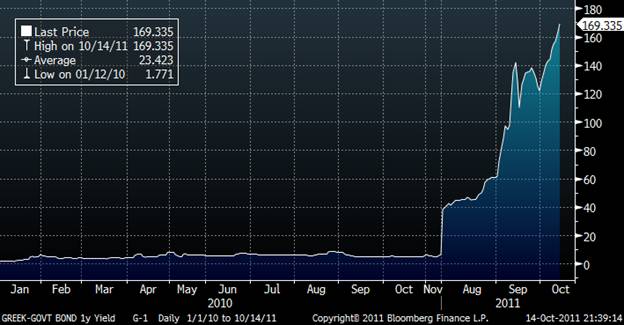By Matt Taibbi
POSTED: OCTOBER 5, 9:34 AM ET
Amidst all the bad news coming out of Wall Street and the economy, here’s something good:
California has backed out of the talks for the long-awaited foreclosure settlement, now making it far from likely that the so-called “Attorneys General” deal will happen anytime soon.
California Attorney General Kamala Harris sent a letter to state and federal regulators explaining that she pulled out because the proposed settlement amount for banks guilty of bad securitization practices leading up to the mortgage crisis – said to be in the $20 billion range – was too small. From Business Week:
Harris says in a letter to state and federal negotiators that the pending settlement is "inadequate" and gives bank officials too much immunity.
I’m convinced that the deal will eventually go through, however, after some further concessions are made. Certainly the absence of both New York (whose Attorney General Eric Schneiderman gamely started this mess by refusing to sign on or abandon his own investigation into corrupt securitization practices) and California will make it difficult for the banks to do any kind of a deal. But there is such an awesome amount of political will to get this deal done in Washington that it almost has to happen before the presidential election season really gets going.
If it does get done, expect a great deal of public debate over whether or not the size of the settlement was sufficient. Did the banks pay enough? Should they have paid ten billion more? Twenty? Even I
engaged in a little bit of that some weeks ago.
But if and when that debate takes place, it will actually obscure the real issue, because this settlement is not about getting money from the banks. The deal being contemplated is actually the opposite: a giant bailout.
In fact, any federal foreclosure settlement along the lines of what’s been proposed will amount to a last round of post-2008-crisis bailouts. I talked to one foreclosure activist over the weekend who put it this way: “[The AG settlement] will be a bigger bailout than TARP.”
How? The math actually makes a hell of a lot of sense, when you look at it closely.
Any foreclosure settlement will allow the banks to pay one relatively small bill to cover all of their legal liabilities stemming from the monstrous frauds they all practiced in the years leading up to the 2008 crash (and even afterward), when they all schemed to create great masses of dicey/junk subprime loans and then disguise them as AAA-rated paper for sale to big private investors and institutions like state pension funds and union funds.
To recap the crime: the banks lent money to firms like Countrywide, who in turn created billions in dicey loans, who then sold them back to the banks, who chopped them up and sold them to, among other things, your state’s worker retirement funds.
So this is bankers from Deutsche and Goldman and Bank of America essentially stealing the retirement nest eggs of firemen, teachers, cops, and other actors, as well as the investment monies of foreigners and hedge fund managers. To repeat: this was Wall Street hotshotsstealing money from old ladies.
Along the road to this systematic thievery, a great many other, sometimes smaller offenses were committed. One involved the use of the MERS electronic registration system. By law, banks were supposed to register with county-level offices in each state every time they sold or resold a mortgage, and pay fees each time.
But they didn’t, instead registering with the private deed-transfer agency MERS, allowing them to systematically, and illegally, bypass local taxes.
So any “AG settlement” might allow the banks to avoid legal damages being sought from three different set of enraged creditors: the public institutions who invested in these sham securities, the private investors who did the same, and the localities who were cheated out of their taxes.
Let’s take a look at each of those three categories.
As far as private investors go, we’ve already had
one lawsuit directed at Bank of America, over losses linked to purchases of bad MBS (mostly from Countrywide mortgages), which resulted in an $8.5 billion settlement.
That one settlement, covering 22 mostly private plaintiffs, cost one bank, Bank of America, nearly half the size of the entire proposed AG settlement. This is from the Times story about that deal, in June:
In a research note, Paul Miller of FBR Capital Markets projected that Bank of America could face a total of $25 billion of losses from the soured mortgages, the most of any of the major banks.
So a private analyst this summer was estimating that just one bank, Bank of America, could face more in damages than the Obama administration and the AGs are now trying to “wrest” from all the major banks, combined, for all their liabilities.
Just a few days ago, news of
more such suits came in. An Irish company called Sealink Funding is suing Chase and Bank of America, seeking $4.5 billion combined in connection to losses in mortgage-backed securities sold to them by those banks. Meanwhile, a German bank, Landesbank Baden-Wurttemberg, is suing Chase for an additional $500 million in losses.
These huge amounts – a few billion here, a half a billion there – are coming from single companies, directed at single banks. And think about the Bank of America settlement for $8.5 billion: what’s the usual payoff in a lawsuit settlement? Ten cents on the dollar? Five?
Why do those figures matter? Because the way these securitizations were structured, legally, Bank of America is obligated to buy back any loans that were sold fraudulently at face value – that is part of the legal language in the “pooling and servicing agreements” under which all of these mortgages were pooled.
So minus a settlement, Bank of America – one bank -- had a potential liability of $424 billion just from its Countrywide holdings! And it got off for $8.5 billion, a major victory.
All of which puts in perspective the preposterously small size of the proposed AG settlement. $20 billion would be a lousy number if we were just talking about Bank of America. But all the big banks combined?
And that just covers legal exposure to private investors. How about public agencies and institutions? Well, just recently, the
Federal Housing Finance Agency sued a group of the major banks (Chase, Barclay’s, and Citi, among others) over losses connected with, again, bad MBS.
This suit covers sales to the two GSEs, Fannie Mae and Freddie Mac, and they’re seeking $200 billion. The’re asking for $25 billion from Merrill Lynch (which is now owned by Bank of America) and $6 billion from Bank of America proper, meaning they’re claiming $30 billion in damages from just one bank.
This, again, puts into perspective the idea of a collective $20 billion settlement covering all the major banks.
But wait, there’s more. The FHFA lawsuit only covers the GSEs. How about state pension funds?
Well, over the summer, Bank of America caught another lawsuit, when a group of
union and state pension funds sued Merrill Lynch for misleading them in a $16.5 offering of, you guessed it, MBS certificates. The suit included claims from Mississippi and Los Angeles County employees, the Connecticut Carpenters’ Annuity Fund, and others.
So again, just with those two lawsuits, one bank, Bank of America, is facing nearly $50 billion in damages. And this doesn’t even cover all of the other states and localities that were wiped out by sales of fraudulently-conceived MBS. California’s state pension fund, CalPERS, lost $100 billion all by itself between 2008 and 2009, largely due to plummeting MBS values.
That would explain why Kamala Harris had to pull out of the settlement talks: she must have realized that going through the courts, her state could probably recover far more than whatever California’s share of $20 billion would have been. It’s incredible that other states have not already come to the same conclusion.
Lastly, of course, there is the matter of lost taxes. To date, most of the lawsuits filed by counties over unpaid fees have been directed at MERS, the private electronic registry company through which the banks “legally transferred” all of these mortgage deeds.
You can do the math. That’s two counties – not states, but counties – claiming they lost a total of at least $70 million. And yes, they’re suing MERS, but ultimately the real liability probably rests with the banks, who would probably have been paying those fees had MERS not existed.
Will any AG settlement cover that potential liability? I have no idea. But if the settlement is broad enough, and covers all activities connected with securitization, it might very well cover these unpaid fees.
How many hundreds of millions in fees will the states lose if that deal goes through? Has anyone even asked? Have any county officials even been consulted?
The point of all of this is, if you add up all of the MBS-related liability out there, the banks as it stands are facing an Armageddon of claims from all sides. It can’t possibly be less than a trillion dollars, and it’s probably much, much more.
But the Obama administration’s current plan is to let them all walk after paying a few shekels apiece into a $20 billion kitty.
Certainly, of course, one can see the logic of a universal deal that avoids the probable end result minus a federal settlement – bankruptcy for one or more of the big “TBTF” companies (especially Bank of America). After all, if all the suits go through, then the final settlement for most of those defrauded parties will be squat or close to it, since there won' tbe any money left to recover. So if they can come up with a deal that satisfies plaintiffs at least in part and keeps the banks solvent, I suppose that might be a good thing.
But the negotiators really have three actors they have to consider: the banks, the investors, and the homeowners, who of course were also victims of this artificial bubble.
The current proposed deal is a huge giveaway to the banks, a major shafting to most of the investors, and would probably give homeowners either next to nothing or some cosmetic reward, i.e. a little bit of principal forgiveness, counseling, etc.
If the Obama administration was serious about helping actual human beings through this settlement, then it would be fighting for homeowners to get the same bailout the banks would get. If the banks are getting a trillion or more dollars of legal immunity, why shouldn’t homeowners get that much debt forgiveness? Or, half that much? A quarter?
It’s encouraging that California and New York have already come to this conclusion. Hopefully, down the road, there will be a settlement, but one that’s fair to everyone. It's probably up to the states to stop this TARP-on-crack of a deal.
http://www.rollingstone.com/politics/blogs/taibblog/attorneys-general-settlement-the-next-big-bank-bailout-20111005







